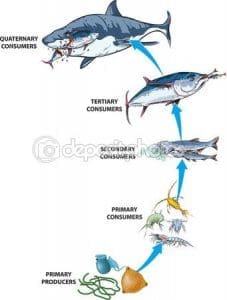
Majestic, mysterious, and misunderstood—sharks have long held the human imagination captive. These shadowy titans of the sea, with their sleek bodies and ancient origins, are more than just fearsome predators. They are intricate parts of ocean ecosystems, playing vital roles that ripple through the deep. Yet, despite their importance, they remain shrouded in myth and mystery.
In this post, we’ll dive deep into the fascinating world of sharks. We’ll explore their behaviors, their roles in the marine world, and why we should protect them. Along the way, we’ll unravel the facts in a fun, engaging way that even young readers can understand.
Contents
The Mysterious World Beneath the Waves🐟
Before we plunge into shark facts, it’s helpful to understand why these creatures capture our attention.
- Sharks have existed for over 400 million years—older than dinosaurs.
- There are more than 500 known species of sharks.
- They live in every ocean, and some even swim in rivers!
As you can see, sharks aren’t just big fish. They are evolutionary survivors, adapted over time to become perfectly suited to their environment. Even though they’re often portrayed as villains in movies, in reality, they are crucial players in the marine food chain.
But what makes sharks so enigmatic?
For one, they are incredibly diverse. From the giant whale shark to the tiny dwarf lanternshark, their sizes and shapes vary wildly. Some glow in the dark, while others can detect the heartbeat of nearby prey. Isn’t that amazing?
From Predator to Protector: Sharks and the Ocean Balance🐟
Now that we’ve peeked into their diversity, let’s explore their role.
Transitioning from mere fascination to functionality, sharks are often referred to as the “doctors of the ocean.” That’s because they:
- Keep prey populations in check, preventing overgrazing of vital marine plants.
- Target weak and sick animals, helping maintain genetic health in species.
- Influence ecosystem structure, from coral reefs to deep-sea trenches.
This balance is delicate. If sharks disappear, entire marine systems can collapse, affecting the fish we eat, the coral reefs we love, and the oceans that provide us with oxygen.
In short: no sharks, no healthy ocean.
Shark Myths Busted!🐟
Let’s shift gears and tackle some popular myths that make sharks seem scarier than they are.
Myth #1: Sharks love to eat humans.
Truth: Humans are not on a shark’s menu. Shark bites are usually due to mistaken identity—like confusing a surfer for a seal.
Myth #2: All sharks are huge and dangerous.
Truth: Most sharks are small and harmless. For example:
- The bamboo shark fits in a backpack.
- The nurse shark is gentle and often rests on the sea floor.
Myth #3: Sharks are brainless eating machines.
Truth: Sharks are intelligent. Some can learn from experience, solve problems, and even show curiosity.
Clearly, we’ve misunderstood these shadowy titans for far too long!
Sensory Superpowers of Sharks🐟
Now let’s glide into what makes sharks truly remarkable—their senses.
Rather than relying on sight alone, sharks use a combination of:
- Smell: They can detect a drop of blood in a million gallons of water.
- Electroreception: Special organs called ampullae of Lorenzini help them sense the electrical fields of other animals.
- Hearing: Sharks can pick up low-frequency sounds from far away.
- Lateral line: A special system that feels water movements around them.
Together, these senses turn sharks into precision hunters, not mindless monsters. Isn’t that cool?
Sharks in Peril: Why They Need Us🐟
As we move forward in this story, let’s not forget that sharks are in danger.
Despite being top predators, humans are the biggest threat to sharks.
The main threats include:
- Overfishing and bycatch.
- Shark finning, where fins are removed and the shark is thrown back to die.
- Habitat destruction, especially of coral reefs and mangroves.
- Pollution, like plastic and oil spills.
Each year, over 100 million sharks are killed. That’s a huge number for a creature that often takes years to mature and has few babies.
So, what can we do?
Let’s take a look at some simple actions:
- Avoid shark products (like shark fin soup or cartilage pills).
- Support marine conservation groups.
- Share facts, not fear, about sharks.
- Choose sustainable seafood options.
- Be a responsible tourist—say no to cruel shark attractions.
Even small steps help these incredible animals survive.
How Sharks Inspire Science and Culture🐟
As we approach the end of our journey, let’s celebrate how sharks inspire us.
Sharks have influenced art, legends, and science:
- Indigenous stories see sharks as guardians or ancestors.
- Engineers study shark skin to design faster swimsuits and planes.
- Artists and filmmakers use shark imagery to convey strength and mystery.
So, not only are sharks crucial to the environment, but they also enrich human culture and technology.
Guardians of the Deep🐟
It’s time to change the narrative. Sharks are not villains. They are not mindless beasts. They are shadowy titans, yes—but they are also vital, vulnerable, and deeply fascinating.
If we teach others to love and respect sharks—not fear them—we can help preserve not just a species, but an entire underwater world.



